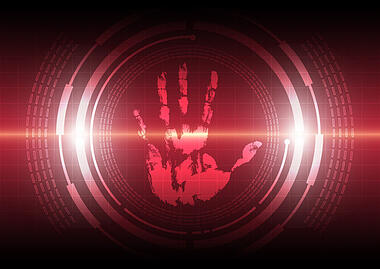
Companies employing a biometric fingerprint scanner aren't just the stuff of sci-fi movies anymore. In fact, biometric fingerprint readers have been incorporated into everything from time clocks to personal cell phones. They offer users security and positive identification that simply isn't found with other identification methods. Understanding the development and inner workings of the biometric fingerprint scanner can help you determine whether it would be a good fit for your business.
Technical Aspects
The origins of fingerprint biometrics stretch all the way back to 1900, where an officer for the Metropolitan Police in London began collecting and observing fingerprints under a microscope. While this method did provide officers with a unique identifier for potential criminals, it wasn't practical for widespread use. The technology developed further with the implementation of computers, but the expensive software and hardware required for practical use was affordable only by law enforcement. It was only when touchpad technology became commonplace that everyone was able to have a biometric fingerprint reader in their pocket.
Today, a biometric fingerprint scanner doesn't require ink and complete prints. With a small touchpad and some time, anyone can use one. There are two types of pad, one which uses light to differentiate the ridges of the finger and another that uses pressure to determine the shape of the print. With both types, the user makes multiple impressions onto the pad to capture the fingerprint image at various angles and with different amounts of pressure. This allows the user to provide an imperfect impression but still get positive identification. All this information is sent to a computer. This computer analyzes the fingerprint, assigning a binary code to specific points around the fingerprint. This unique binary code serves as a proxy for the employee, providing security to the user.
After establishing a fingerprint, the user enters the verification stage. Any time they use the pad, the computer registers and matches the fingerprint to their binary code, allowing access. Fingerprint biometric systems can store thousands of fingerprints at a time.
Safety
Confidentiality and safety are key in today's workforce. With businesses like Target and Citibank losing business to data breaches, companies want to ensure that any information collected isn't spread. Using a biometric fingerprint scanner is a safe and secure way to positively identify employees without compromising their security. Biometric fingerprint readers store only the binary code of each employee's fingerprint rather than personal information which could be harvested by hackers. This provides much needed safety to businesses and users.
Use in Business
A biometric fingerprint scanner is becoming more widely used by businesses and it's easy to see why. Many businesses rely on badges or personal information for clock-in and clock-out purposes and both options have some serious drawbacks. Badges are easily lost and even more easily misused in the form of buddy punches. Using personal information, such as a social security number, decreases the chances of an employee misusing the time clock, but does increase the chances of that information being accidentally compromised. A fingerprint scan ensures that the employee is present during timekeeping without using personal information.
Ultimately, the use of a biometric fingerprint reader is gaining widespread acceptance and increased personal and business use. Fingerprints are a secure source of identification that pose essentially no threat of identity theft. For businesses, biometric fingerprint readers can increase compliance with timekeeping protocols and reduce time wasted and potential compromised security in the case of a lost badge. With the advances in systems, biometric fingerprint scanners are a low cost and effective choice for timekeeping security.
